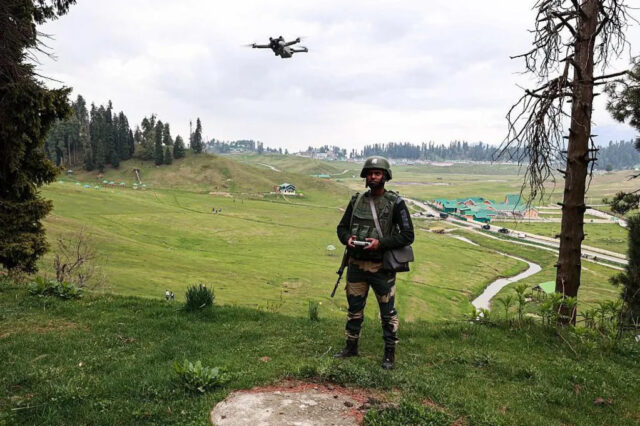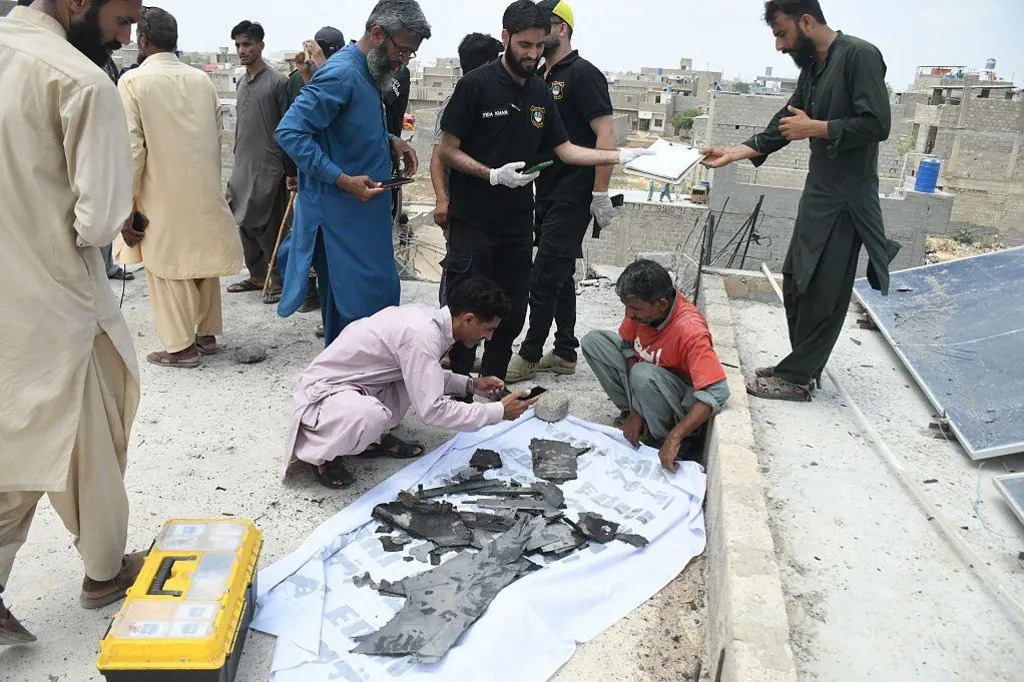
The long-simmering tension between nuclear-armed rivals India and Pakistan has entered an ominous new chapter — the world’s first fully-fledged drone war between two nuclear-capable nations. On Thursday, India accused Pakistan of orchestrating coordinated drone and missile attacks on three military installations in Indian territory and the disputed region of Indian-administered Kashmir. Pakistan, in turn, claimed to have shot down 25 Indian drones across multiple cities, while denying responsibility for the alleged attacks.
This tit-for-tat exchange, escalating beyond artillery shelling and cross-border firing, has introduced an unpredictable new dimension to an already volatile rivalry: unmanned warfare. Experts warn this shift may recalibrate the balance of military power, reshape doctrines, and most dangerously, reduce the threshold for escalation.
Drone Skirmishes: An Escalation in the Shadows
The current escalation appears to have been triggered by a deadly militant attack in Pahalgam last month, which killed several Indian tourists. India blamed Pakistan-based militants and responded with missile strikes into Pakistani territory — strikes that Islamabad denies occurred. Since Wednesday, Pakistan claims Indian air strikes and shelling have killed at least 36 civilians and wounded 57 more. In retaliation, Pakistani drones reportedly entered Indian airspace.
Pakistan’s military reported downing 25 Indian drones — including Israeli-made Harop loitering munitions — over major urban centers like Karachi, Lahore, and Rawalpindi. These drones are designed to loiter over targets before diving in for a precision strike, acting as both surveillance tools and guided munitions.
India, for its part, has stayed publicly silent but reportedly launched retaliatory strikes against Pakistani radar systems, including in Lahore — a claim Pakistan flatly denies. Indian defense officials privately insist the actions are part of a broader precision-strike strategy, leveraging drones to engage targets without direct violation of airspace with manned aircraft.

A New Strategic Doctrine: Drones as Force Multipliers
Drones offer not only surveillance capabilities but also operational flexibility. In the modern theater of war, they serve as:
- Precision Strike Tools: Capable of targeting high-value enemy infrastructure without risking pilot lives.
- Suppression of Enemy Air Defenses (SEAD): Acting as decoys to trigger radar systems and clear paths for missile attacks.
- Loitering Munitions: Providing real-time decision-making capabilities on strike timing and target validation.
According to Professor Jahara Matisek of the U.S. Naval War College, “This dual role — targeting and triggering — makes drones a force multiplier in degrading enemy air defenses without risking manned aircraft.”
India’s Growing Drone Arsenal
India’s UAV capabilities have long been supported by Israeli technology. Its fleet includes:
- IAI Heron: High-altitude, long-endurance drones used for intelligence and battlefield surveillance.
- IAI Searcher Mk II: Tactical drones designed for frontline reconnaissance, with 18-hour endurance and a 300km range.
- Harop: A loitering munition capable of autonomous tracking and striking of radar-emitting targets.
Despite its current numbers being described as “modest,” India recently signed a $4 billion deal with the United States to acquire 31 MQ-9B Predator drones. These advanced UAVs offer 40 hours of endurance and high-altitude operations, significantly boosting India’s capacity for strategic stand-off targeting.
Additionally, India is working on swarm drone technologies — small, cost-effective UAVs deployed en masse to saturate and overwhelm enemy defenses. This could mark a paradigm shift in battlefield tactics.
Pakistan’s Drone Capabilities: Diverse and Expanding
Pakistan’s drone development is robust, featuring both imported and indigenous models:
- CH-4 (China) and Bayraktar Akinci (Turkey): Combat drones used for surveillance and strikes.
- Burraq and Shahpar: Domestically developed platforms with growing strike capabilities.
- Loyal Wingman Concept: Unmanned aerial vehicles designed to accompany and assist manned fighter jets.
Ejaz Haider, a Lahore-based defense analyst, notes that Pakistan possesses over 1,000 UAVs, and the integration of drones into the Pakistan Air Force has been a key strategy for nearly a decade.
A Drone Arms Race with Global Implications
The drone war marks a shift from traditional warfare — and is reflective of broader global trends. While comparisons with the Russia-Ukraine conflict are inevitable, the scale and symbolism differ. Unlike in Ukraine, where drones dominate the battlefield, experts see India and Pakistan using drones as surgical, lower-intensity options in a broader toolkit.
“Drones offer lower-risk alternatives to manned incursions, but they also introduce new escalation risks,” says Prof Matisek. “Every drone shot down, every radar jammed, could become a flashpoint between two nuclear powers.”
Both countries have received international assistance: Israel for India, and China and Turkey for Pakistan. This evolving drone competition is not merely regional — it’s drawing global technology and alliances into a localized conflict.
The Danger of a Controlled Burn Becoming a Wildfire
The restrained deployment of drones may suggest an effort to contain the conflict, but that perception is dangerously misleading. Analysts warn that what appears to be a tactical engagement may spiral into full-scale confrontation if broader retaliation is triggered.
Manoj Joshi, an Indian defense analyst, stresses: “Deploying drones instead of fighter jets can be seen as a calculated de-escalation. But if these exchanges precede a larger aerial offensive, the calculus changes entirely.”
Haider concurs, adding that “a real Pakistani retaliatory strike would involve a shock-and-awe campaign — a full-spectrum offensive with manned and unmanned systems. What we see now is likely a probing move, not the full punch.”
An Inflection Point for South Asia
The current drone conflict is a glimpse into the future of warfare — a warfare that is remote, deniable, and potentially more dangerous. As the skies over Kashmir become increasingly congested with UAVs, the stakes are higher than ever. The presence of nuclear weapons on both sides amplifies every decision, every escalation.
“Drones lower the political and operational threshold for action,” says Prof Matisek. “But they also introduce a dangerous ambiguity — was that drone surveillance or a strike? Was it state-sanctioned or rogue? These questions increase the chance of miscalculation.”
The coming days will determine whether South Asia steps back from the brink or slides into deeper, more lethal confrontation. For now, the world watches — drones circling in silence, diplomacy hanging by a thread.



